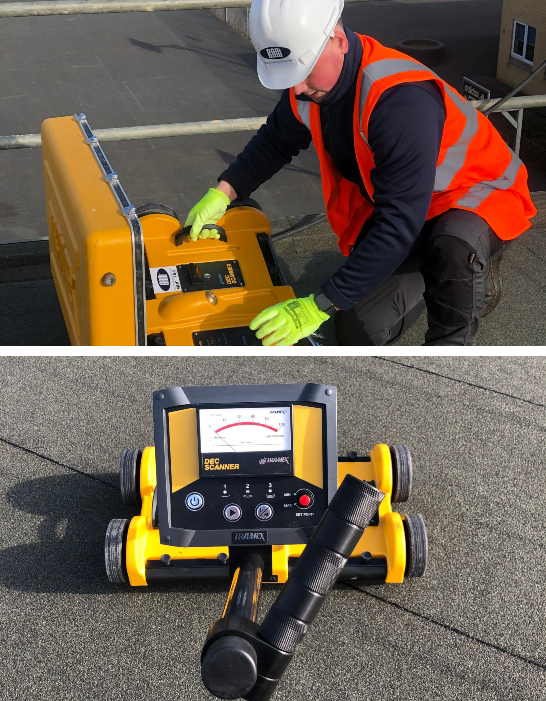|
|
Our leak detection services can rapidly and accurately detect hidden leaks to save building owners time, disruption and to negate the risk of wasteful expenditure, whilst minimising ongoing damage. Within any environment, hidden leaks can be extremely difficult to locate and are often accompanied by unnecessary inconvenience and damage to the building envelope.
Our internal and external leak detection services have been successfully utilised by a range of clients, including:
- Building Owners & Architects
- Hospitals / NHS
- Facilities Management Companies
- Local Authorities & Public Sector
- Housing Associations
- Building Contractors
- Property Management Companies
- Schools & Academies
- Insurance Companies
We can pinpoint any type of leak or source of damp in your building. We use the most reliable and conclusive, non-destructive methods available. Several techniques are usually used to locate leaks within the building envelope. Results from each method allows attention to be focused on a specific area.
Leak Detection Services
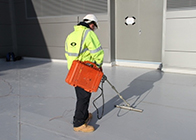
The continuous waterproof membrane on a roof may act as an electrical insulator. If an electrically-conductive substrate lies directly below the membrane, any defect in the membrane (leak position) that exists will allow a pathway for an electrical current to be discharged to earth.
The ‘Dry’ test equipment introduces a stabilised high voltage at over the dry roof membrane, at a low currently level for safety. By moving over, the membrane with the portable test instrument, an experienced technician can pinpoint defects that would allow water to enter the roof construction. Again, this technique requires a conductive roof deck (concrete, metal), or substrate (e.g. a foil-face insulation board), and cannot be used on some conductive membranes such as EPDM.
FIND OUT MORE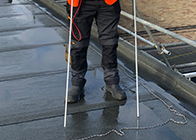
If a roof has a continuous waterproof membrane, this may act as an electrical insulator; however, if any leak positions exist, water that has seeped into them will act as a partial conductor for an electrical current to floor to the deck, and from there to earth.
The ‘Wet’ test equipment introduces a low-voltage direct current pulse over the wet roof membrane. By identifying distortions and differences in the electric field across the roof surface, an experienced technician can pinpoint the leaks by tracking any current flow. The water entry pathways and areas of entrapped moisture can be marked onto the roof surface using a wax crayon and onto a roof plan in the accompanying report. This technique requires a conductive roof deck (concrete, metal), and cannot be used on some conductive membranes such as EPDM.
FIND OUT MORE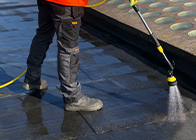
RAM’s innovative Dynamic Leak Investigation (DLI™) service, has been designed to address a growing requirement for a more robust and detailed testing of a buildings envelope. Through the combination of a wide variety of building envelope test methods, RAM Building Consultancy are able to offer very high success rate for detecting leaks and also allows our experts to deliver informed honest advice.
Through the use of a combination of Electronic Leak Detection, Rainfall Simulation, Controlled Pressure Testing and Electrical Capacitance Testing, RAM Building Consultancy are armed alongside their decades of industry expertise, to provide a solution that offers both cost effective and unparalleled success rate.
FIND OUT MORE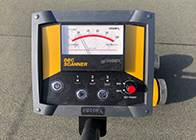
The roof surface must be an electrical insulator, capacitance survey will not work on metal-faced felts or some other electrically conductive roof finishes such as some silver reflective paints. Before surveying the roof the surface must be dry. The instrument is calibrated and the survey undertaken by systematically covering the roof, ensuring that all the roof area is surveyed. Core samples may be taken as a ‘wet’ and ‘dry’ area to confirm the readings of the instrument and that there is no component within the roof construction that could be giving spurious results. Alternatively the test equipment is calibrated in an area where there are no reported leaks below and the insulation/deck is assumed to be dry.
The survey is completed with any ‘wet’ areas being either marked on the roof surface or a roof plan. As a general rule readings below 40% are considered as representing a ‘dry ‘construction. Readings between 40-60% may be classed as part of the construction being ‘damp’ and readings over 60% classed as part of the construction being ‘wet’.
FIND OUT MORE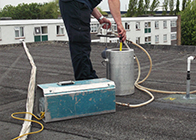
The effects of water ingress into a roof’s construction and subsequently the building below, can have long lasting effects not only on wetting and damaging the building fabric and causing leaks into the building, but also reducing the thermal performance of the roof and significantly increasing air-conditioning and heating costs.
In some cases the ‘wet’ roof is unnecessarily stripped and replaced. Stripping and replacing the roof can be very expensive, disruptive and time consuming. Due to the cost and disruption implications often only adhoc repair are undertake and the water is left trapped within the roof. This entrapped water can still ‘leak’ into the building causing further damage, nuisance and disruption.
DeWatering systems utilise a graduated vacuum, evenly created to drawout the entrapped water from predetermined pump locations. When all the water has been drawn out the pump points are remove and the waterproofing made good.
FIND OUT MOREContact Leak Detection Specialists
